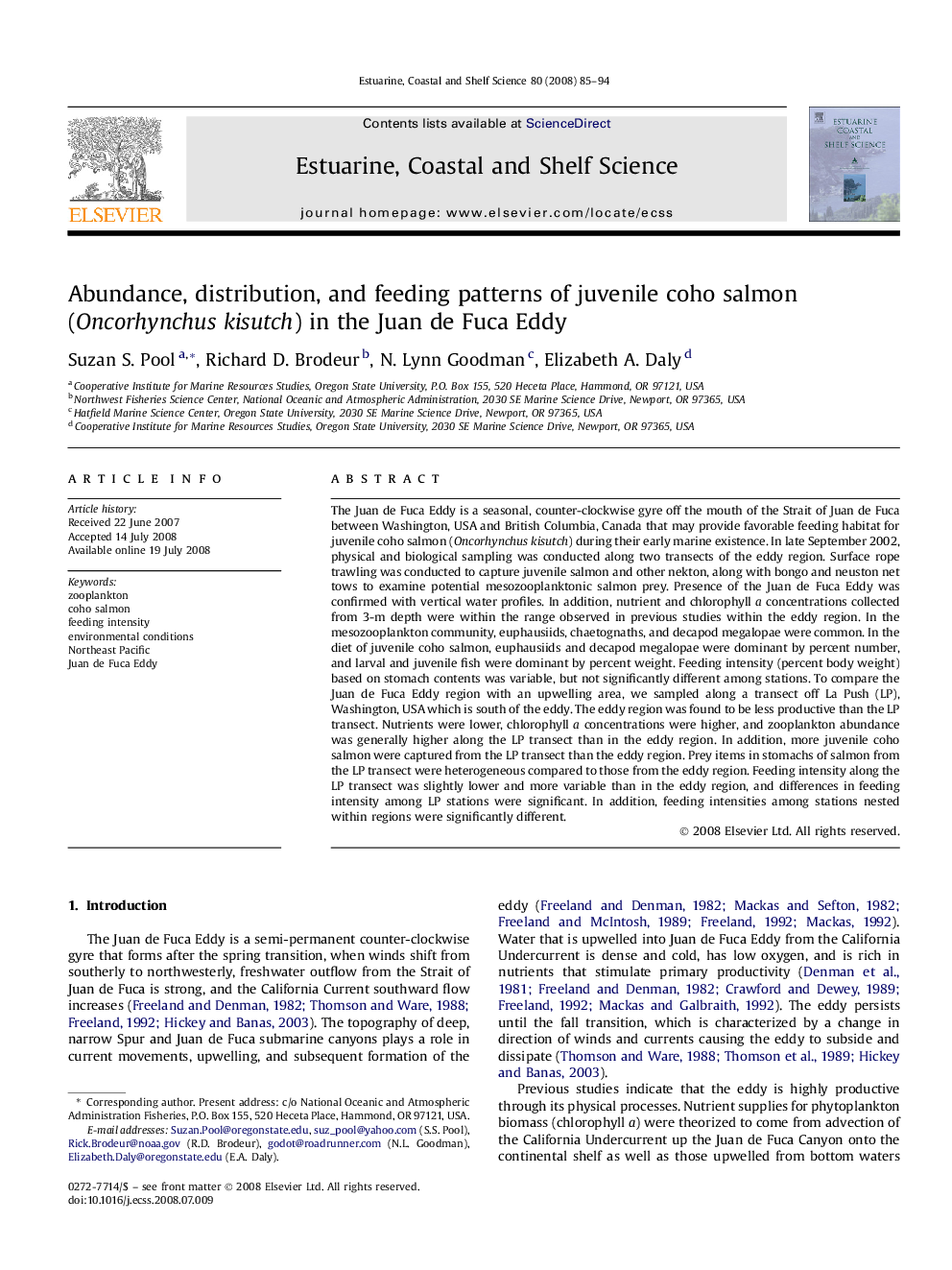| کد مقاله | کد نشریه | سال انتشار | مقاله انگلیسی | نسخه تمام متن |
|---|---|---|---|---|
| 4541432 | 1326724 | 2008 | 10 صفحه PDF | دانلود رایگان |

The Juan de Fuca Eddy is a seasonal, counter-clockwise gyre off the mouth of the Strait of Juan de Fuca between Washington, USA and British Columbia, Canada that may provide favorable feeding habitat for juvenile coho salmon (Oncorhynchus kisutch) during their early marine existence. In late September 2002, physical and biological sampling was conducted along two transects of the eddy region. Surface rope trawling was conducted to capture juvenile salmon and other nekton, along with bongo and neuston net tows to examine potential mesozooplanktonic salmon prey. Presence of the Juan de Fuca Eddy was confirmed with vertical water profiles. In addition, nutrient and chlorophyll a concentrations collected from 3-m depth were within the range observed in previous studies within the eddy region. In the mesozooplankton community, euphausiids, chaetognaths, and decapod megalopae were common. In the diet of juvenile coho salmon, euphausiids and decapod megalopae were dominant by percent number, and larval and juvenile fish were dominant by percent weight. Feeding intensity (percent body weight) based on stomach contents was variable, but not significantly different among stations. To compare the Juan de Fuca Eddy region with an upwelling area, we sampled along a transect off La Push (LP), Washington, USA which is south of the eddy. The eddy region was found to be less productive than the LP transect. Nutrients were lower, chlorophyll a concentrations were higher, and zooplankton abundance was generally higher along the LP transect than in the eddy region. In addition, more juvenile coho salmon were captured from the LP transect than the eddy region. Prey items in stomachs of salmon from the LP transect were heterogeneous compared to those from the eddy region. Feeding intensity along the LP transect was slightly lower and more variable than in the eddy region, and differences in feeding intensity among LP stations were significant. In addition, feeding intensities among stations nested within regions were significantly different.
Journal: Estuarine, Coastal and Shelf Science - Volume 80, Issue 1, 20 October 2008, Pages 85–94